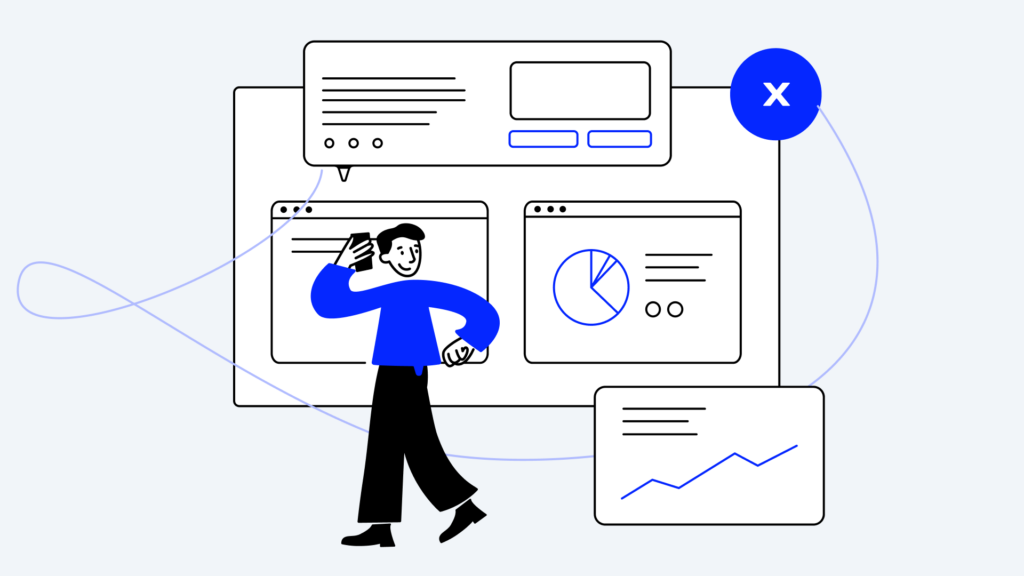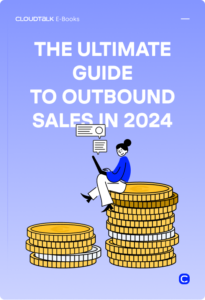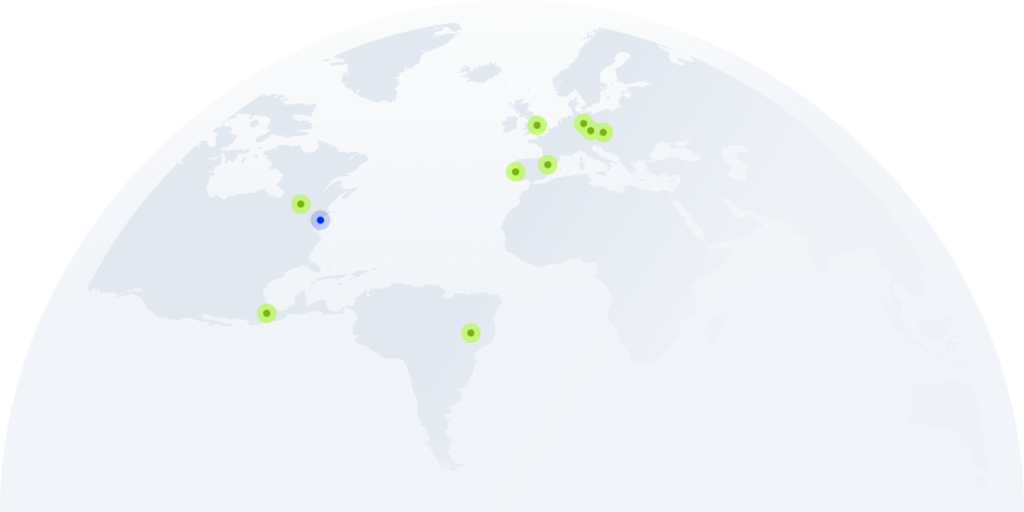11 Ways To Improve Your Outbound Calls Strategy

Outbound calling allows you to directly engage potential customers, introduce products or services, and build relationships that can lead to successful conversions.
In a digital age where consumers are overwhelmed with digital marketing, a well-crafted, personalized outbound call stands out, grabbing consumer attention. Thus, optimizing your outbound calling strategy is imperative for businesses to succeed and maintain competitiveness.
Key takeaways:
- A well-crafted outbound calling strategy addresses issues like improving conversion rates and enhancing overall customer satisfaction through personalized interactions and efficient problem-solving.
- An outbound calling strategy enables proactive engagement with customers, boosting lead generation, enriching customer interaction, increasing sales, providing valuable insights, and strengthening brand recognition.
- To measure the effectiveness of your outbound calling strategy, focus on conversion rate, call success rate, average call duration, lead generation metrics, and customer feedback.
- CloudTalk offers a cloud-based call center software with over 100 features to improve your outbound calls.
What is an Outbound Calling Strategy?
An outbound calling strategy is a systematic approach you can use to proactively contact potential or existing customers via phone. This approach aims to market products and services or collect information to start conversations that can result in sales or improve customer relationships.
Benefits of Outbound Calling Strategy
By effectively utilizing outbound calls, you can gather valuable feedback, identify new opportunities, and build stronger customer relationships.
Thanks to a strong outbound calling strategy, you will: :
- Enhance Lead Generation: Outbound calling effectively identifies and engages potential customers, expanding your sales pipeline with qualified leads ready for further nurturing.
- Improve Customer Engagement: Direct calls enable personalized interactions, allowing you to address specific customer needs and preferences, thereby elevating the customer experience.
- Increase Sales Opportunities: This proactive approach facilitates direct promotion of products and services, opening up opportunities for upselling, cross-selling, and closing deals more efficiently.
- Gather Valuable Insights: Engaging with customers over the phone provides immediate feedback and insights into customer behavior, preferences, and satisfaction, guiding strategic adjustments.
Strengthen Brand Awareness: Regular outbound calls keep your brand top of mind, reinforcing your market presence and fostering ongoing customer loyalty.
Learn about outbound sales in our ultimate guide

11 ways to improve your outbound calling strategy
Whether you aim to increase sales, improve customer engagement, or gather insights, these strategies will provide you with the tools to achieve your objectives and elevate your business’s outreach efforts.
#1 Analyze Your Strategy and Set Clear Goals
Start by soliciting feedback on your initial strategy from colleagues across all levels, and being open to their insights for a robust plan.
Clearly define your objectives, such as lead generation or sales conversion, and set realistic goals to keep your team motivated.
Regularly reassess these goals based on performance and market shifts.
Key performance indicators (KPIs) are vital for measuring success. Important KPIs are:
- Conversion Rate: calculated by dividing the total calls by successful leads, indicating the strategy’s ROI.
Global Benchmark: 2.35%
- Average Handling Time (AHT): aims for shorter calls to increase the number of prospects contacted.
Global Benchmark: 6 minutes
- Customer Satisfaction Score (CSAT): measures customer satisfaction, usually collected through post-call surveys or feedback mechanisms.
Global Benchmark: 75% – 80%
#2 Leverage Technology to Streamline Operations
Utilizing tools like predictive dialers and CRM integrations not only streamlines your operations but also enhances the personalization of each conversation. These technologies boost efficiency, enabling your team to engage in more impactful interactions with potential customers.
In addition to leveraging technology, the strategic timing of your calls plays a crucial role.
Schedule them for when prospects are most likely to be available and receptive. Studies suggest that mid-to-late afternoon, especially Wednesdays and Thursdays, are optimal. With the right tool you can fine-tune your calling schedule, optimizing it to increase the chances of connecting with your audience effectively.
This strategic approach ensures that your outreach maximizes engagement and improves the overall success rate of your campaigns.
#3 Scripts to Success: Balancing Structure with Flexibility
Scripts serve as a crucial foundation for guiding conversations, but it’s important to empower your agents with the flexibility to deviate from them as needed.
Encourage your team to listen actively to the prospect’s responses and adjust their approach accordingly. This adaptability allows agents to tailor their communication in real-time, addressing specific concerns, questions, or interests that arise during the call.
By doing so, conversations become more engaging and personalized, significantly enhancing the customer experience.
This approach fosters a more natural and authentic interaction, which can lead to better rapport with prospects and ultimately, more successful outcomes.
#4 Emphasize the Value Proposition
Your team must have a deep understanding of your product or service’s value proposition. They should be skilled at clearly explaining how they meet specific customer needs or solve problems, offering strong and clear reasons why they are the best choice in the market.
Training your team to highlight key benefits and how they translate into real-world advantages for customers ensures that your message resonates and is memorable.
This approach helps build trust and credibility with potential customers.
#5 Prioritize Quality Over Quantity
Instead of merely aiming to increase the volume of calls made, emphasize the quality of each interaction to enhance lead progression through the sales funnel.
Quality calls are characterized by meaningful engagement, where the conversation is tailored to the customer’s needs, pain points are addressed, and valuable solutions are offered. These interactions build trust, demonstrate expertise, and foster a connection that goes beyond a transactional relationship.
To achieve high-quality calls, focus on thorough preparation and active listening. Before making a call, research the prospect to personalize the conversation, aligning your message with their specific context and needs. During the call, practice active listening to understand their concerns and respond with relevance and empathy.
Implementing a strategy that values quality over quantity not only increases the likelihood of conversions but also positions you as a trusted advisor and not just another caller trying to sell something.
#6 Personalize Through Segmentation
Customizing your outreach strategy through audience segmentation is a powerful tactic. By categorizing potential customers based on demographics, behaviors, or interests, you can tailor your calls to resonate more effectively with each group.
This targeted approach ensures that your communication is relevant and appealing, significantly enhancing the likelihood of engagement and response.
By aligning your messaging and offers with the specific needs and preferences of each segment, you foster stronger connections with your audience.
#7 Analyze Metrics and Refine strategies
It’s vital to regularly review key performance indicators (KPIs) such as call success rates, conversion rates, and feedback. These metrics offer valuable insights that can help you adapt your scripts, call timing, and strategies, leading to better results over time.
Flexibility is key to optimizing outbound call strategies in the dynamic landscape of business operations. If you’re experiencing a high hit rate but low conversion, it might be time to reassess and track different KPIs.
The effectiveness of tools and strategies can vary greatly from one call center to another, underscoring the importance of outbound call center software.
Regularly gathering insights from your team and remaining adaptable allows you to discover the most effective strategy for your specific context. Stay open to change and leverage the power of outbound call center software to find the optimal strategy for your contact center.
#8 Prioritize Ongoing Training and Encourage Feedback Loop
Regular training sessions not only enhance agents’ knowledge and proficiency but also boost their confidence and engagement. By investing in their development, you foster a culture of excellence and adaptability, empowering your team to deliver exceptional service and achieve your business objectives more effectively.
Also, create a system where agents can share insights and feedback from their calls. This collective learning brings ideas for adjusting strategies, scripts, and approaches.
#9 Use a Power Dialer to Automat Dialing Process
With a Power Dialer you can reach three times more prospects per day than with a conventional dialing procedure. It automatically dials phone numbers from a predetermined list. When a call is completed, the Power Dialer immediately moves on to the next number on the list, increasing efficiency by reducing the wait time between calls.
The tool allows you also to assign call campaigns with call scripts and surveys to agents and streamline time-consuming or repetitive administrative work.
Check out more about the Power Dialer in our Sales Dialer Software video:
#10 Use Click to call to Remove Repetitive Dialing
If you don’t want to use an automatic dialing system, CloudTalk’s Click-to-Call feature can keep things moving quickly even if your agents are initiating their calls manually.
Instead of having to manually enter phone number digits, Click-to-Call lets your agents simply click on phone numbers within CloudTalk’s interface to initiate their outbound calls.
#11 Use Region-specific Numbers for Higher Pick-up Rates
Regardless of where you’re from, odds are you’re more likely to pick up the phone if you recognize the caller’s area code.
People are skeptical of foreign phone numbers because one, there’s only a faint chance they’ll know the person on the other end of the line, and two, depending on their carrier these kinds of incoming calls can incur heavy fees.
With International Numbers prospects are less likely to ignore your calls. You can improve your pick-up rates significantly by calling like a local anywhere in the world.
You can try these features for 14 days for free
5 Ways How to Measure the Effectivity of Outbound Calling Strategy
Measuring the effectiveness of your outbound calling strategy is crucial for understanding its impact and identifying areas for improvement.
Here are five key tools to gauge the success of your outbound efforts:
1. Conversion Rate:
This metric tracks the percentage of outbound calls that successfully achieve their intended outcome, whether it’s a sale, appointment, or another specific action. A higher conversion rate indicates a more effective calling strategy, directly reflecting the quality of your leads and the efficiency of your sales pitch.
Global Benchmark: 2.35%
2. Call Success Rate:
Measure the proportion of calls that result in a positive engagement, such as a completed conversation, compared to those that don’t reach the prospect or end in rejection. This helps assess the overall reach and reception of your calling efforts.
Global Benchmark: can vary between industries, for business 40%-50%
3. Average Call Duration:
Analyzing the length of your calls can offer insights into customer engagement and interest. Longer calls often suggest a higher level of interest or more in-depth conversation, which could indicate a successful engagement strategy.
Global Benchmark: 5 minutes and 2 seconds (302 seconds)
4. Lead Generation Metrics:
Keep track of how many new leads or prospects are generated through your outbound calling activities. This not only measures the effectiveness of your lead generation strategy but also helps in forecasting future sales potential.
Global Benchmark: Vary between industries.
5. Customer Feedback and Satisfaction:
Collecting feedback from prospects or customers during or after calls can provide valuable insights into how your outbound strategy is perceived. Customer satisfaction scores or feedback can highlight strengths and pinpoint areas that require refinement.
Global Benchmark: 75% – 80%
By closely monitoring these metrics, you can improve your outbound calling strategies, enhance customer interactions, and ultimately, drive better sales outcomes.
Summary
CloudTalk’s cloud-based call center software is equipped with over 100 advanced features designed to enhance your outbound calling strategy significantly.
With its user-friendly interface, you can effortlessly customize your approach to outbound calling, ensuring our features seamlessly integrate with diverse sales techniques.
Moreover, CloudTalk is built to grow with your business, offering scalable solutions that adapt to your expanding needs.
Learn about outbound sales in our ultimate guide

FAQs
What is an outbound calling strategy?
An outbound calling strategy is a plan where businesses call potential or existing customers to sell products or collect information, aiming to meet certain sales or engagement goals.
What is inbound and outbound calling?
Inbound calling refers to calls received from customers, typically involving queries, support requests, or feedback. Outbound calling, on the other hand, involves calls made by the company to customers or prospects for sales, updates, or information collection purposes.
Why is outbound calling important?
Outbound calling is essential for directly reaching and engaging with potential customers, driving sales, and building relationships. It allows businesses to proactively address customer needs, introduce new offerings, and maintain a connection with their audience.
How to make a successful outbound call?
To make a successful outbound call, prepare thoroughly by understanding the customer’s profile, clearly define the call’s objective, use a personalized approach, listen actively, and address the recipient’s needs or concerns effectively.
How to calculate the cost per inbound and outbound call?
To calculate the cost per inbound or outbound call, divide the total costs associated with making or receiving calls (including operational, labor, and technology expenses) by the total number of calls made or received in a given period.

















